
A Comprehensive Guide to Database Management Systems
In today’s data-driven world, effective database management is critical for organizations to thrive.
To stay competitive, organizations must make informed, data-driven decisions, and that’s where modern database management systems come in. From traditional relational databases to agile NoSQL solutions, understanding the intricacies of DBMS is critical to harnessing the power of data.
In this comprehensive guide, we delve into the details of DBMS, exploring their types, features, benefits, and challenges. Whether you’re an aspiring data professional or a business owner looking to optimize your data strategies, join us as we discover the true capabilities of modern database management systems.
Introduction to Database Management Systems
Definition of DBMS
At the heart of every modern organization’s data infrastructure is a database management system (DBMS)-a powerful tool that revolutionizes the way data is organized, accessed, and manipulated.
Simply put, a DBMS is a software application that enables users to efficiently store, retrieve, and manage vast amounts of data in a structured manner. It serves as a virtual warehouse where data is organized into tables, relationships are established, and queries can be executed with ease.
It is important to remember that the primary purpose of a DBMS goes beyond mere data storage.
It acts as a central hub that connects disparate applications and multiple users to a common pool of data, ensuring its integrity, security, and accessibility. By providing a structured framework, a DBMS enables organizations to effectively organize and manage data, transforming it into valuable insights and actionable information.
Database vs DBMS
In the realm of data management, the terms “database” and “database management system (DBMS)” are often used interchangeably, creating confusion about their true differences. This is especially apparent when talking to less tech-savvy users, who often don’t see the difference between the two. While both terms refer to the storage and organization of data, they serve different purposes and display fundamental differences.
A database, in its simplest form, refers to a structured collection of data stored in a central location. It provides a means for organizing and retrieving information efficiently. Think of a database as a repository where data resides, often organized in tables with relationships established between them.
On the other hand, a DBMS is a comprehensive software application designed to facilitate the efficient management of databases. It serves as an intermediary between users and the underlying database, providing a wide range of functionality and tools to simplify data storage, retrieval, and manipulation. A DBMS provides a centralized platform where users can define, create, modify, query, and access data, abstracting away the complexity of low-level data operations.
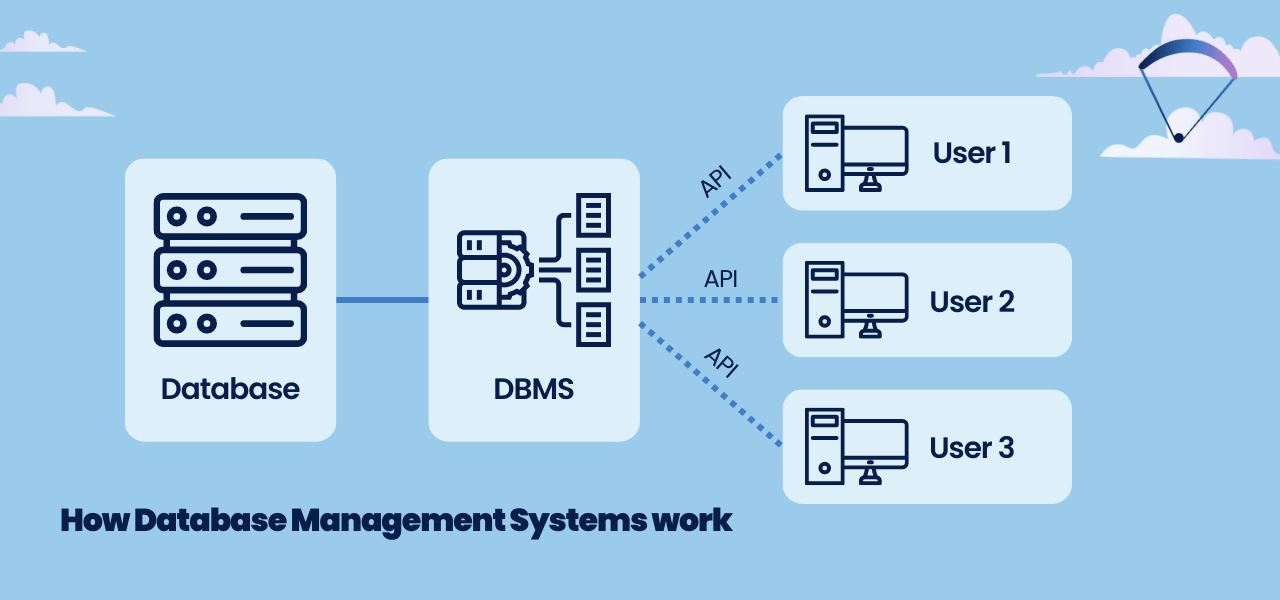
Importance of data accessibility in organizations
Still wondering why fast and easy access to data is so important? Consider a large e-commerce platform that handles millions of customer transactions every day.
Without a DBMS, managing such an immense amount of data would be a daunting task, resulting in data inconsistencies, inefficiencies, and limited scalability. However, with a well-designed DBMS, this platform can efficiently organize customer information, track orders, manage inventory, and provide a seamless user experience. The DBMS ensures that data is stored securely, is easily retrieved, and can be queried for real-time insights into sales trends, customer behavior, and inventory management.
As the volume and complexity of data continues to grow exponentially, the importance of a robust DBMS becomes even more critical.
A modern database management system enables organizations to harness the power of their data and turn it into a strategic asset. It enables efficient data storage, rapid retrieval and manipulation, and ensures that critical information is readily available for decision-making.
Evolution of DBMS: From flat files to modern systems
The evolution of database management systems (DBMS) has been nothing short of remarkable, transforming the way organizations manage and use data. To appreciate the importance of modern DBMS, it’s important to look back at their humble beginnings.
In the early days of computing, data was typically stored in flat files, where information was stored sequentially with no logical structure. Retrieving specific data required manually searching through these files, making data management a time-consuming and error-prone process.
The first generation of DBMS introduced hierarchical and network models that organized data in a more structured way. Hierarchical models arranged data in a tree-like structure, while network models allowed for more flexible relationships between data elements.
The breakthrough came with the introduction of the relational model in the 1970s, which became the foundation of modern DBMSs. Relational DBMSs (RDBMSs) allowed data to be represented as a collection of tables with defined relationships, enabling more efficient data retrieval through standardized query languages such as the ever-so-popular SQL.
In the years that followed, advances in technology and the growing demand for data-driven insights gave rise to new types of DBMS. NoSQL DBMSs emerged as an answer to the need to handle unstructured, semi-structured, and rapidly changing data by providing flexible schemas and horizontal scalability. Object-Oriented DBMS (OODBMS), on the other hand, brought object-oriented programming principles to database design, enabling the storage of complex data structures.
All of these types of DBMSs are extremely fascinating, and in the later paragraph we will take a closer look at each of them and compare them to each other.
From flat files to the dynamic and sophisticated systems of today, the journey of DBMS showcases the constant pursuit of efficient data management. As organizations grapple with ever-increasing data volumes, DBMS continue to play a vital role in unlocking the true potential of data, paving the way towards digital transformation.
[Read also: Application Modernization Strategy: Your Ultimate Guide]
Key Database Management System components
Having explored the definition, history, and basic concepts of Database Management Systems (DBMS), it’s time to look into the key components that form the foundation of these sophisticated software systems.
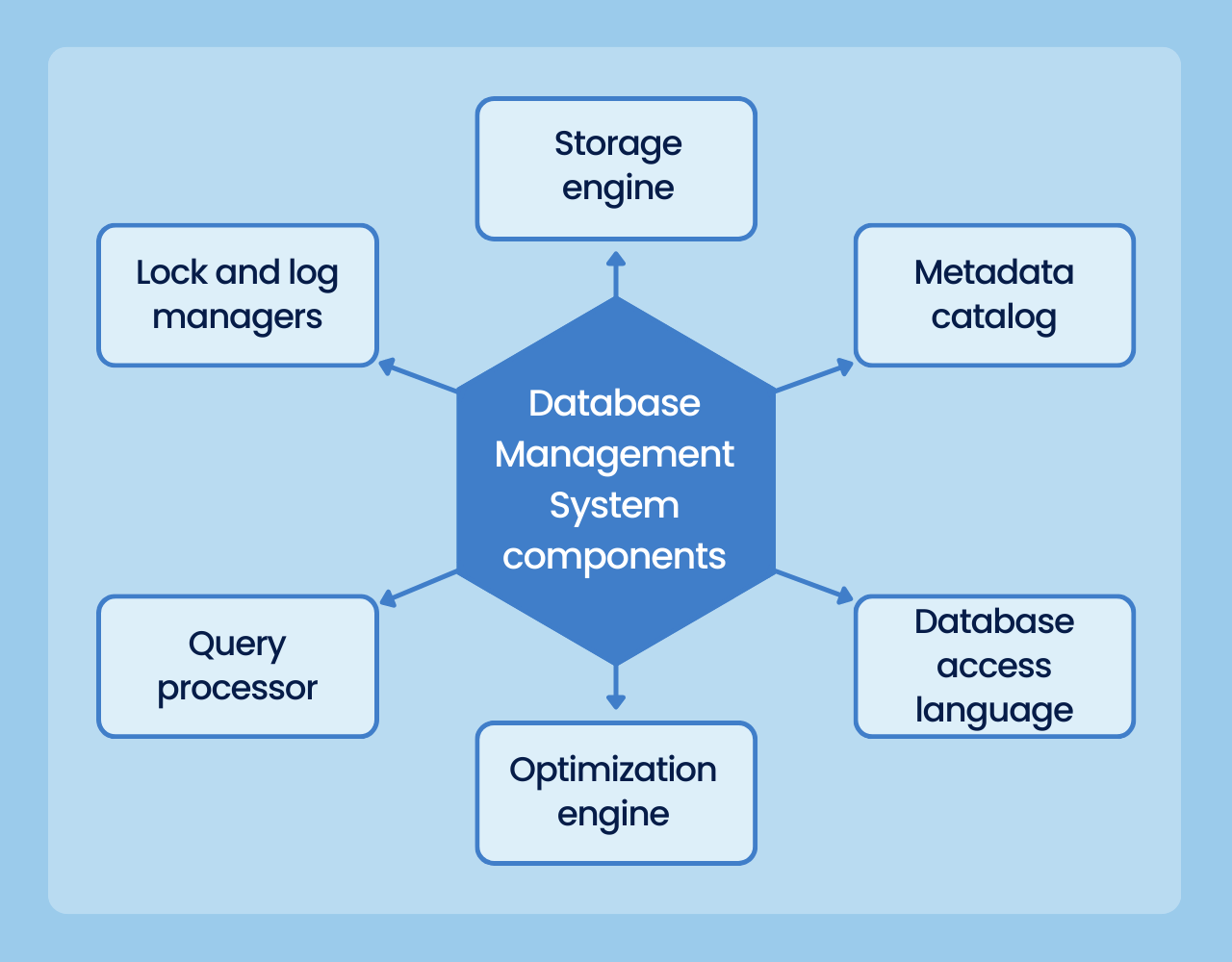
Storage engine
The storage engine is the backbone of a DBMS, responsible for managing the physical storage and retrieval of data. It interacts directly with the operating system, handling tasks such as data read/write operations, memory management, and disk I/O optimization.
Metadata catalog
Sometimes called a system catalog or database dictionary, the metadata catalog acts as a repository of essential information about the database, its structure, and its relationships. It stores metadata, which includes details about tables, columns, indexes, constraints, and more. Every time new objects are created, the metadata catalog stores information about them. The metadata catalog enables efficient data access, query optimization, and data integrity enforcement.
Database access language
The database access language provides a means for users to interact with the DBMS. SQL is a primary example of a database access language, which includes several sets of statements. These include the data control language, the data definition language, and the data manipulation language, all of which focus on different aspects of data processing.
Optimization engine
DBMS may also include an optimization engine – an advanced tool used for enhancing the performance of DBMS operations. It analyzes the queries submitted to the DBMS, examines various execution plans, and determines the most efficient way to retrieve data from the database.
Query processor
After a query is optimized the query processor executes them and returns the results. It takes the query received from the database access language and breaks it down into smaller tasks that can be executed by the DBMS. The query processor performs tasks like query parsing, semantic analysis, query plan generation, and query execution.
Lock and log managers
The lock and log managers are critical components for ensuring data consistency, concurrency control, and recovery in a multi-user DBMS environment. The lock manager handles the locking and unlocking of database resources to prevent conflicts and maintain data integrity during concurrent transactions. The log manager, on the other hand, records all changes made to the database and creates a transaction log that enables recovery in the event of a failure or system crash.
[Read also: Complete Guide To Replatforming – Definition, Benefits, & Best Practices]
Four categories of Data Languages
Now that we know the importance of database management systems and their main components, it’s time to figure out how to communicate with them. That’s where Structured Query Language (SQL) comes in.
In short, it is a standardized programming language used by software developers and database administrators to manage relational databases. Its primary goal is to provide a declarative and intuitive way to interact with databases, allowing users to define, manipulate, control, and manage data within a relational database management system. SQL works through a client-server model, where a user or application (the client) sends SQL commands to a database server, which executes the commands and returns the results.
SQL includes 4 components (categories of data languages) that serve different purposes:
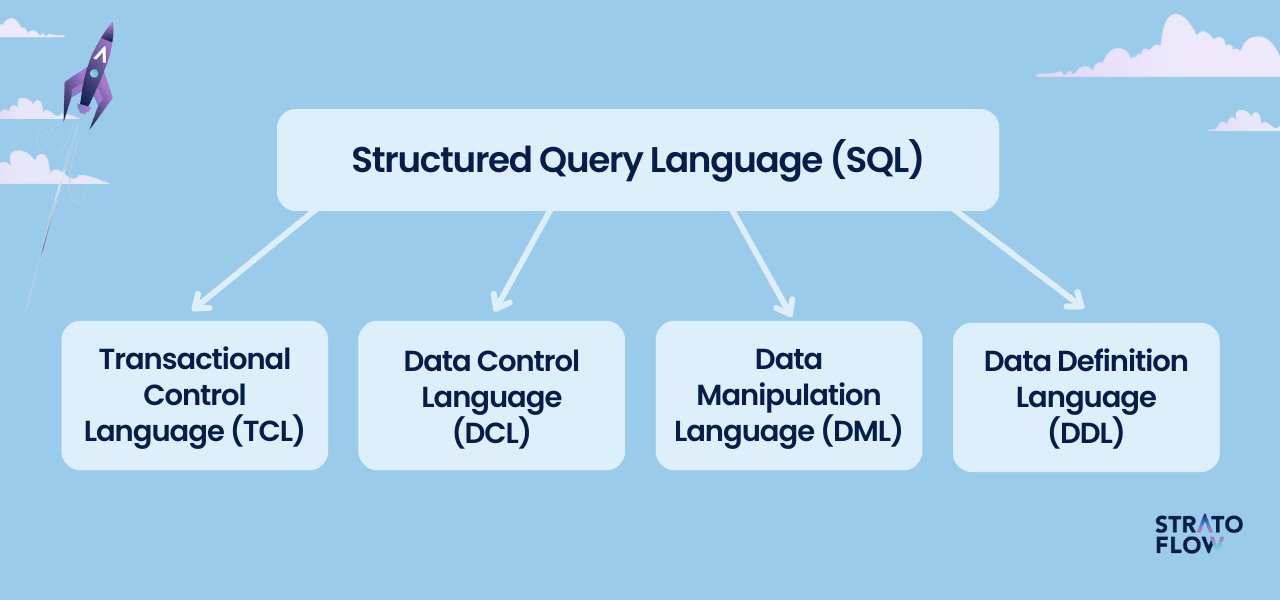
Data Definition Language (DDL)
DDL statements are used to specify the schema, data types, relationships, and integrity rules of the database. For example, in SQL (Structured Query Language), DDL statements include:
- CREATE TABLE,
- ALTER TABLE,
- DROP TABLE.
Data Manipulation Language (DML)
DML statements are used to perform operations on the data itself such as insert or delete data, rather than the structure of the database itself. SQL DML statements include:
- INSERT,
- UPDATE,
- DELETE,
- SELECT.
For example, a typical DML statement might be “INSERT INTO Customers (Name, Email) VALUES (‘John Doe’, ‘john.doe@example.com‘)”.
Data Control Language (DCL)
DCL deals with the control and authorization aspects of database operations. DCL statements are used to grant or revoke privileges to users or roles within the database. Examples of DCL statements include:
- GRANT,
- REVOKE.
These statements grant or remove privileges like SELECT, INSERT, UPDATE, or DELETE on specific tables or views.
Transactional Control Language (TCL)
TCL enables users to manage transactions (unirs of work) within the database. It’s statements allow users to control the flow and consistency of transactions by defining their boundaries, committing or rolling back changes. SQL provides TCL statements such as
- COMMIT,
- ROLLBACK,
- SAVEPOINT,
[Read also: Documenting Software in Development Projects: Types, Best Practices, and Tools]
Types of Database Management Systems
Throughout the years, different types of database management systems (DBMS) have emerged to address different data needs and application scenarios. All of them have had one goal in mind – to leverage available data and increase business effectiveness.
Let’s go through the main types of database management systems and see how they compare.
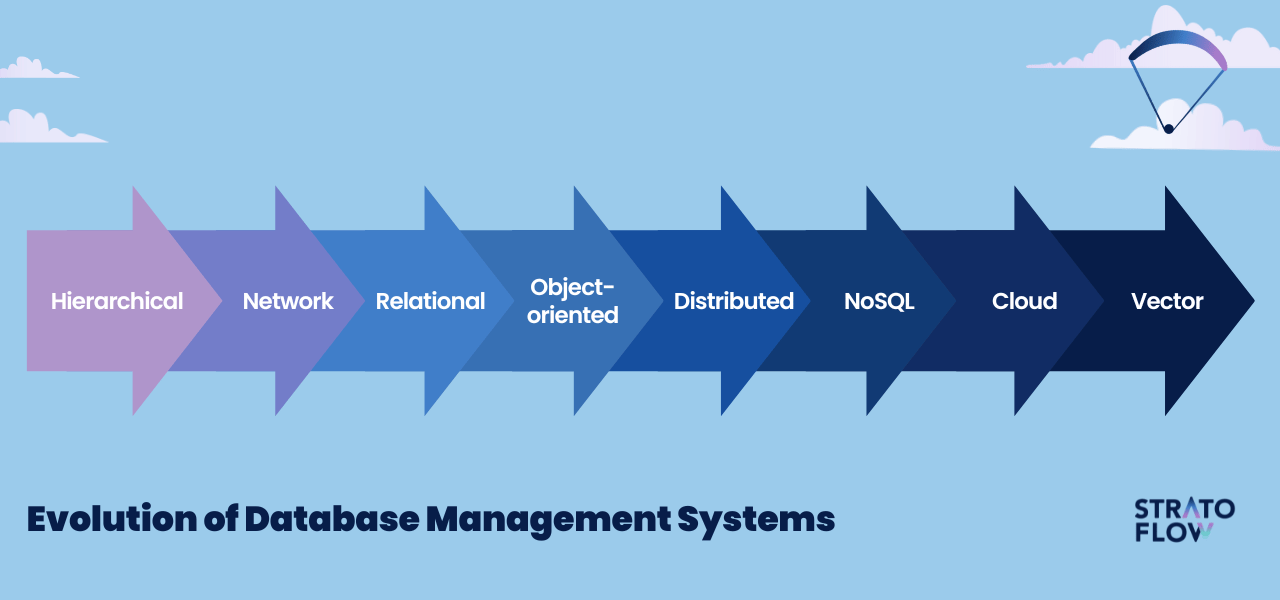
Hierarchical and network database management system
Before we dive deeper into modern database management systems, let’s take a quick trip down memory lane and look briefly at hierarchical and network database management systems – the ancestors of modern DBMS software.
The Hierarchical Database Management System (HDBMS) is one of the earliest approaches to data organization, dating back to the 1960s. It was widely used in the early years of computer systems and has played a significant role in the evolution of database management.
In an HDBMS, data is organized in a hierarchical structure that resembles a tree-like relationship. Parent-child relationships exist between data elements, forming a rigid hierarchy. Each parent can have multiple children, but a child can have only one parent.
The Network Database Management System (NDBMS) emerged in the 1970s as an alternative to the hierarchical approach.
NDBMS introduced a more flexible data model that allowed for complex relationships between data elements. Unlike the strict parent-child hierarchy of HDBMS, NDBMS supports many-to-many relationships, allowing for more intricate data models.
Although NDBMS represented a significant step forward from the hierarchical approach, its adoption has declined over time. This is largely due to the rise of relational database management systems (RDBMS) and other modern DBMS solutions that offer greater simplicity, standardization, and scalability.
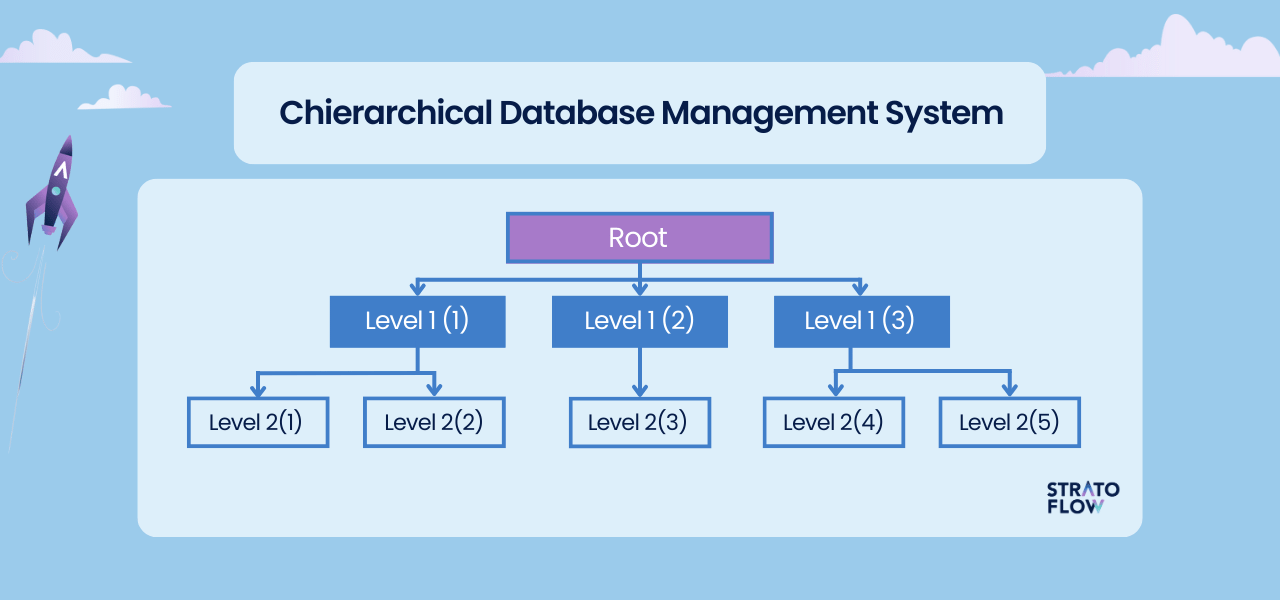
Relational database management system (RDBM)
The relational database management system (RDBMS) is regarded as the most widely used type of DBMS. It organizes data into tables with predefined relationships between them, using SQL as the primary language for data manipulation and retrieval.
One of the prominent features of RDBMS is its ability to ensure data integrity by enforcing constraints such as unique keys, foreign key relationships, and referential integrity. This assures that data is accurate, consistent, and reliable. In addition, RDBMS provide transaction support that allows multiple operations to be treated as a single unit of work, ensuring atomicity, consistency, isolation, and durability (ACID properties).
The popularity of RDBMS is due to its versatility and widespread adoption. It can handle a wide range of applications and data types, from simple data entry systems to complex enterprise-level applications. The flexibility of the relational model enables efficient data organization, retrieval, and analysis, making it suitable for industries as diverse as fintech, healthcare, e-commerce, and more.
In addition, the widespread availability of RDBMS solutions such as MySQL, Oracle Database, Microsoft SQL Server, and PostgreSQL has fostered a robust ecosystem of tools, frameworks, and support. This availability, combined with the maturity and reliability of RDBMS technology, has made it a trusted choice for organizations of all sizes.
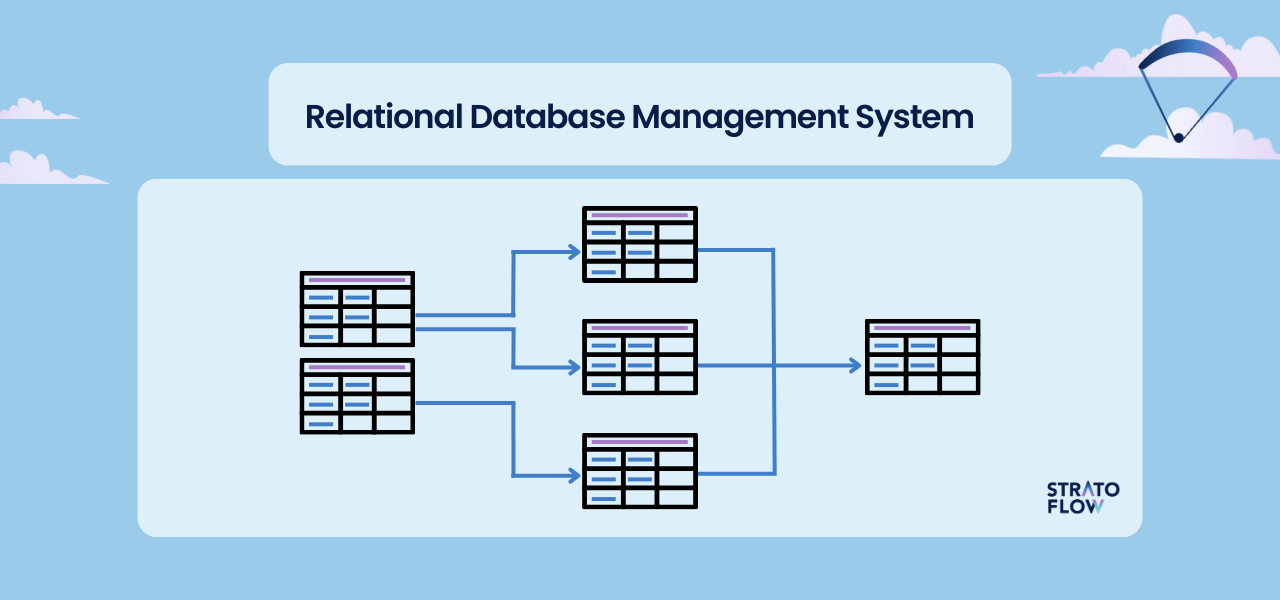
Object-oriented database management system (OODBMS)
Object-Oriented Database Management Systems (OODBMS) bring together the worlds of object-oriented programming and database management.
As the name implies, OODBMS represent data as objects, encapsulating both their attributes and their behavior. This allows for seamless integration of data and the operations associated with it.
Objects in an OODBMS can have relationships, inheritance hierarchies, and methods associated with them, providing rich data modeling capabilities. This makes OODBMS ideal for applications where the structure and behavior of data entities are important, such as scientific research, social media platforms, and complex simulations.
OODBMS provide transparent persistence, meaning that objects can be stored and retrieved directly from the database without the need for complex mapping mechanisms. This simplifies the development process and allows for a more natural interaction with the data.
However, it’s important to note that an OODBMS is not a one-size-fits-all solution. In scenarios where data consistency, scalability, and complex queries are the primary concerns, other types of DBMS, such as RDBMS or DDBMS, may be more appropriate.
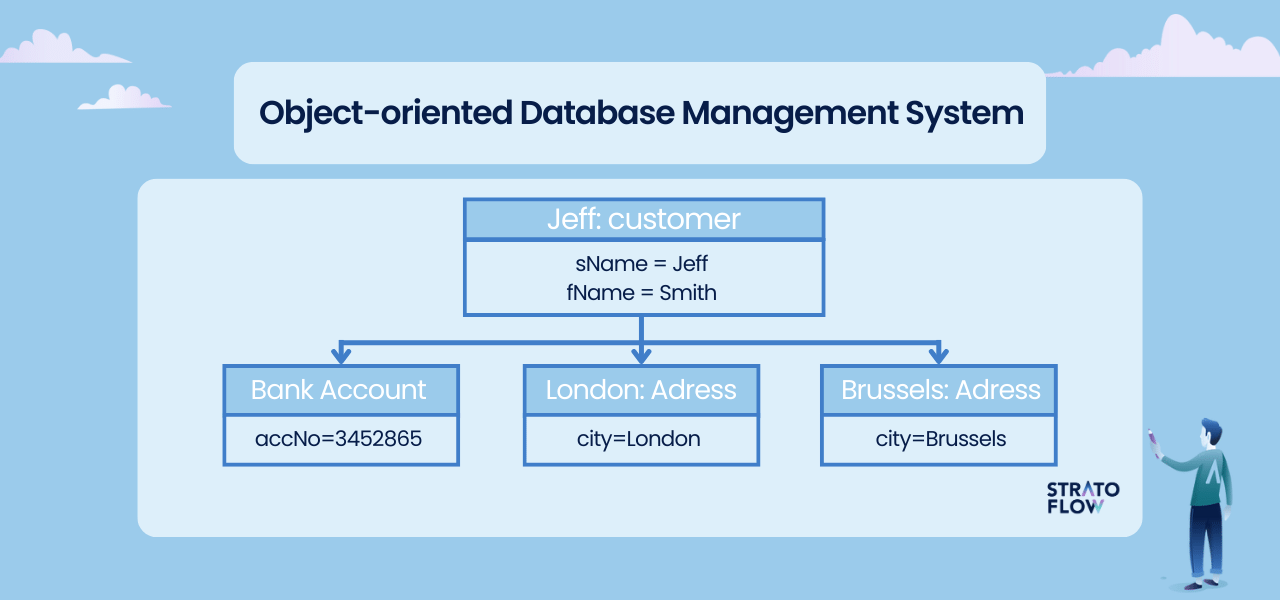
NoSQL Database Management Systems
As organizations have begun to collect all types of user data critical to their operations and expansion, the need to handle vast volumes of unstructured and semi-structured data has arisen. This is where NoSQL database management systems (DBMS) come in, providing a flexible and scalable solution for data storage and retrieval.
Unlike the rigid structure of RDBMS, NoSQL databases take a schema-less or schema-flexible approach, enabling dynamic and agile data modeling. NoSQL DBMSs are designed to handle multiple data formats, including JSON, XML, key-value pairs, graphs, and documents, making them a versatile choice for modern applications that deal with unstructured or evolving data schemas. This flexibility allows developers to adapt their data models on the fly to meet changing business needs and reduce the need for costly and time-consuming schema migrations.
Scalability is another key advantage of NoSQL DBMSs. Many NoSQL databases are horizontally scalable, meaning they can distribute data across multiple nodes and handle massive amounts of data and traffic. As your business grows, so does your database. This distributed nature allows applications to scale seamlessly to meet the demands of growing user bases and rapid data ingestion.
NoSQL databases often offer powerful query capabilities tailored to the specific data model they support. Keep in mind that there are four main types of NoSQL database systems: graph databases, document databases, key-value stores, and wide-column stores. Each type uses a different data model, resulting in significant differences between each NoSQL type. For example, document-oriented databases like MongoDB provide rich query languages that enable flexible search and aggregation of JSON-like documents. On the other hand, graph databases like Neo4j offer specialized query languages optimized for traversing and analyzing complex relationships between entities.
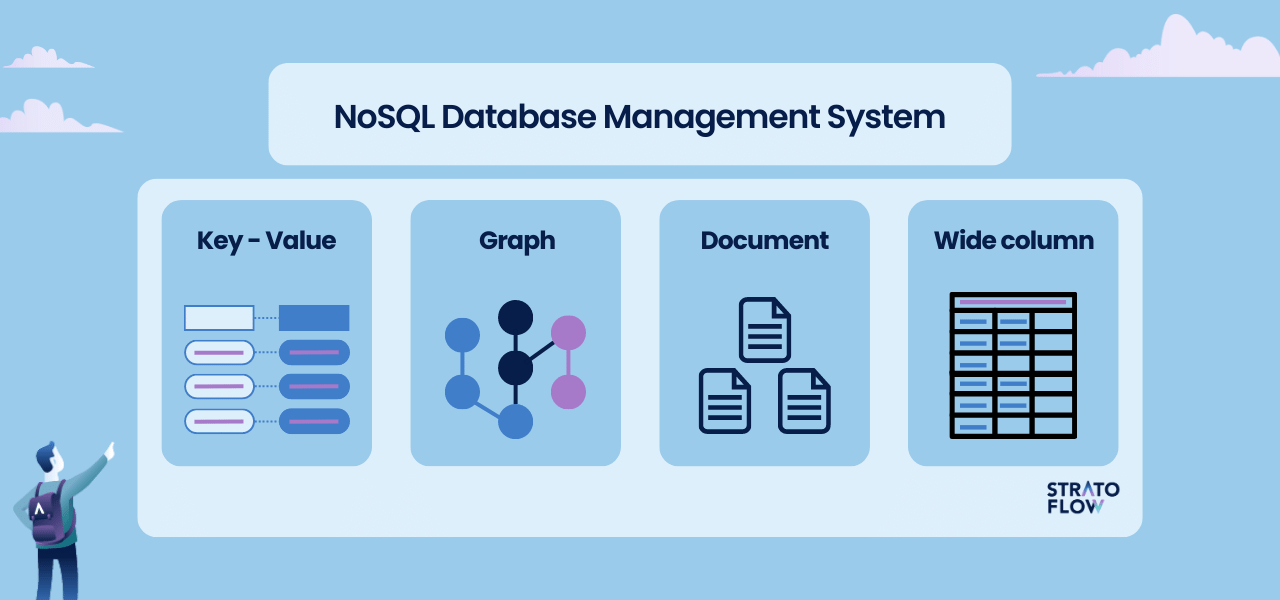
Distributed database management system (DDBMS)
In the realm of data management, distributed database management systems (DDBMSs) offer a distinctive approach that sets them apart from other database management systems. They provide significant scalability, fault tolerance, and parallel processing in a distributed environment.
Unlike RDBMS, which relies on a centralized database, a DDBMS distributes data across multiple nodes, enabling horizontal cloud scalability. While RDBMS focuses on structured data, DDBMS accommodates both structured and unstructured data, making it suitable for applications that deal with different types of data.
Similarly, DDBMS differs from NoSQL DBMS by offering distribution and replication strategies that enable scalability and fault tolerance. Both NoSQL and DDBMS support flexible data models, but DDBMS extends that flexibility to a distributed environment. However, it is important to note that while DDBMS focuses primarily on distributing data across multiple nodes for fault tolerance and improved processing, NoSQL emphasizes flexibility, scalability, and performance – factors that are arguably more important in today’s market.
Nonetheless, the practical implications of DDBMS are most apparent in scenarios where data is geographically dispersed or where high availability and fault tolerance are critical. Multinational companies with offices in different locations can use DDBMSs to achieve real-time data analysis and global data sharing. Cloud computing environments benefit from DDBMS scalability and efficient data processing across distributed nodes.
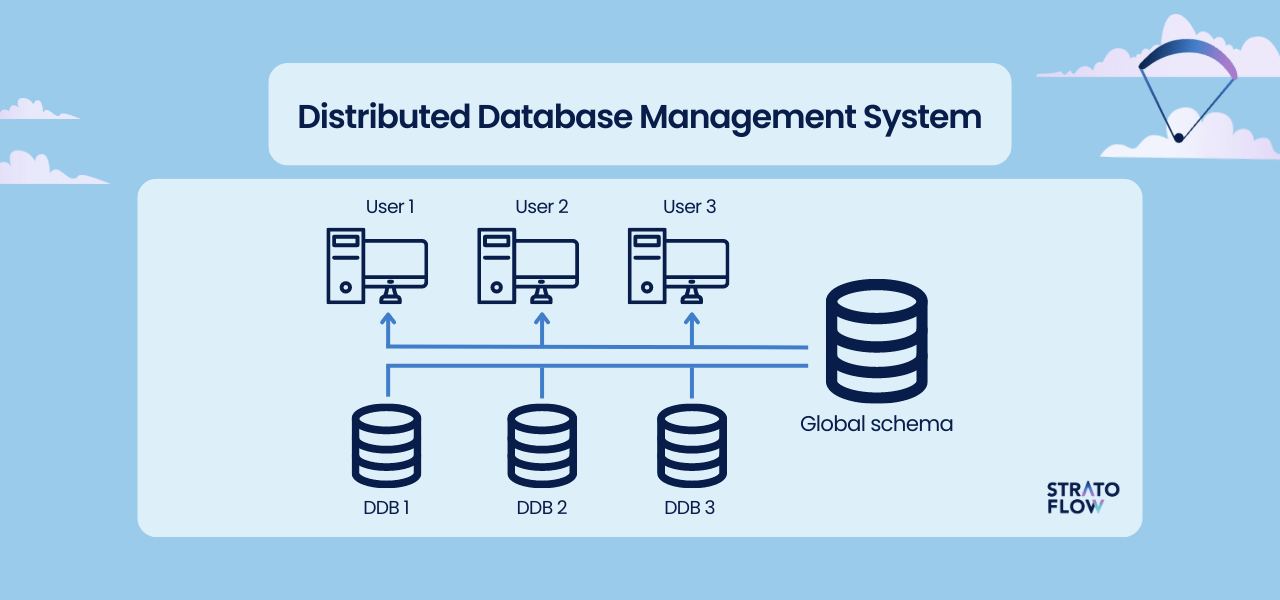
Cloud database management systems
The emergence of Cloud Database Management Systems (CDBMS) has been another major revolution in the way organizations manage their data.
CDBMS provide a scalable, flexible and, perhaps most importantly, cost-effective approach to data management. Using cloud providers eliminates the need for on-premises hardware to store and process data, reducing upfront costs and making it an attractive option for organizations of all sizes.
Cloud providers offer elastic resources that can be easily scaled up or down based on the changing needs of the business. This ensures that databases can handle varying workloads and accommodate growth without the limitations of physical hardware.
CDBMS also enables seamless collaboration and access to data from anywhere with an Internet connection. Multiple users can securely access and modify data simultaneously, fostering teamwork and improving productivity. In addition, CDBMS offers integration with other cloud services such as analytics platforms, machine learning tools, and data lakes, enabling organizations to leverage a comprehensive cloud ecosystem for advanced data processing and analytics.
Vector database management systems
Vector database management systems (DBMS) like Vector or Pinecone represent the newest and most innovative approach to data management.
These systems are specifically designed to handle high-performance analytics and complex data processing tasks. The main feature of Vector DBMS is its ability to leverage vectorized processing, which allows for the simultaneous execution of multiple data elements, resulting in significantly faster query performance. In today’s data market, where organizations are dealing with massive volumes of data and demanding real-time analytics,
Vector DBMS plays a crucial role in enabling efficient data processing and analysis. The practical implications of using Vector DBMS include accelerated data-driven decision-making, improved operational efficiency, and enhanced scalability.
Its advanced capabilities make it a valuable solution for industries such as finance, telecommunications, and e-commerce, where rapid analysis of large datasets is vital. By leveraging the power of Vector DBMS, organizations can gain actionable insights and stay at the forefront of data-driven innovation.
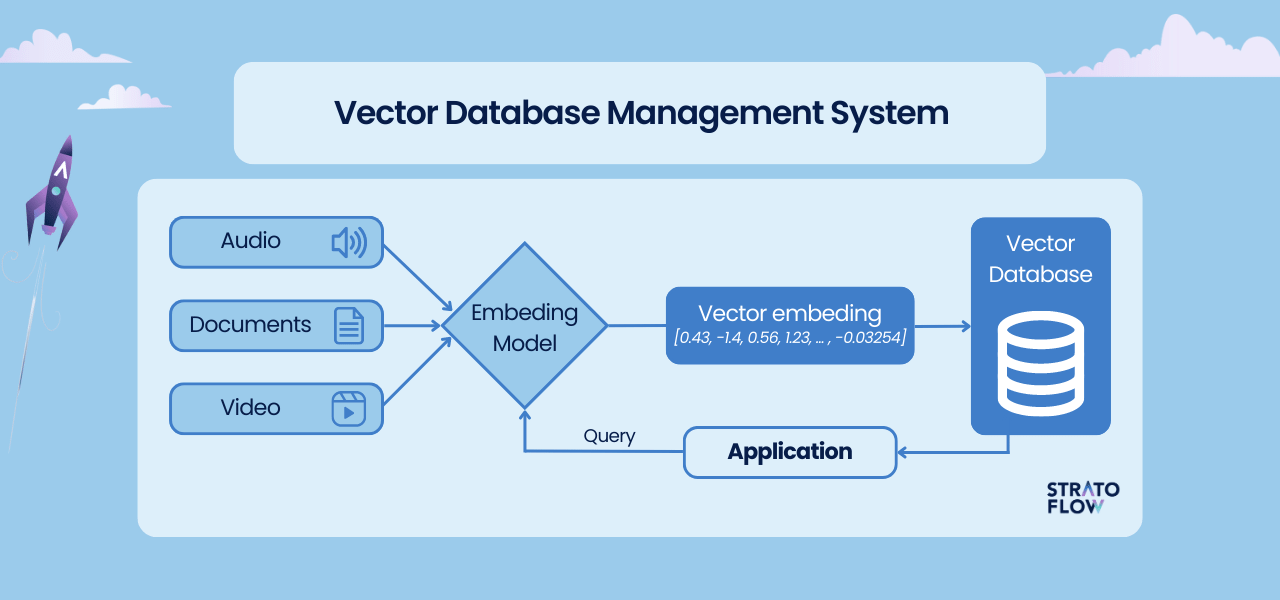
Future of database management systems
The future of database management systems (DBMS) will be influenced by a number of emerging technologies, opening up exciting opportunities for data-driven innovation. Two key factors that will shape the future of DBMS are the convergence with artificial intelligence (AI) and machine learning (ML), and the rise of decentralized technologies such as blockchain.
The integration of DBMS with AI and ML brings intelligent data processing, predictive analytics, and automated decision making to the forefront. AI-powered DBMS solutions will be able to greatly streamline query execution, improve data quality, and deliver valuable insights to organizations on an unprecedented scale. Companies like Palantir have already begun developing AI-powered, data-driven solutions with a wide range of practical applications. This convergence enables organizations to harness the power of AI and ML to extract meaningful patterns, correlations, and trends from their vast amounts of data.
In addition to AI and ML, decentralized technologies such as blockchain have the potential to disrupt traditional DBMS approaches. Blockchain offers secure, transparent, and immutable data storage and transaction management capabilities. While still in its early stages, the use of blockchain in DBMS can provide trust, auditability, and data integrity, especially in industries where these aspects are critical, such as finance, supply chain, and healthcare.
Popular Examples of DBMS software
A wide variety of database software solutions are available for managing databases, including comprehensive enterprise systems as well as open source alternatives.
Below are some examples of the most well-known and popular database management systems:

PostgreSQL
PostgreSQL is an open-source relational database management system (RDBMS) known for its robustness and feature-rich nature. It offers a wide range of advanced features, including support for complex queries, transactions, and data integrity constraints. Its popularity among developers stems from its extensibility, allowing users to create custom functions and data types, as well as its active and supportive community, which provides regular updates and bug fixes to ensure its reliability. With its combination of powerful features and strong developer support, PostgreSQL has become a go-to choice for developers seeking a reliable and scalable database solution.
Snowflake
Snowflake is a cloud-based database management platform. It is known for its scalability, flexibility, and performance. Snowflake’s unique architecture separates computing and storage, enabling users to scale resources independently and efficiently process large volumes of data. Its popularity among developers stems from its ability to handle diverse data types, provide seamless integration with popular analytics tools, and offer a simplified management experience in a cloud-native environment.
Redis
Redis is yet another open-source in-memory data structure storage system. It is renowned for its fast data access and high-performance capabilities.Its popularity stems from its simplicity, robust caching mechanisms, and efficient handling of real-time data, making it a popular choice for applications requiring fast data retrieval and processing.
MongoDB
One of the most popular database solutions is MongoDB. It is a popular document-oriented NoSQL DBMS. It is known for its flexibility, scalability, and ease of use. Developers favor MongoDB for its ability to handle unstructured data, making it suitable for a variety of use cases such as content management, real-time analytics, and mobile applications. MongoDB offers seamless integration with modern development frameworks and its support for horizontal scalability, allowing organizations to efficiently manage large and growing datasets.
Oracle Database
Oracle Database is a widely used and highly regarded database management system (DBMS) developed by Oracle Corporation. It offers a comprehensive and feature-rich platform for efficiently storing, managing, and retrieving structured and unstructured data both in the cloud as well as on-premises.
MySQL
MySQL is an open-source relational database management system (DBMS) that has gained significant popularity due to its simplicity, flexibility, and wide adoption across various industries and applications.
SQL server
SQL Server is a robust relational database management system (DBMS) developed by Microsoft. It is known for its comprehensive set of features, strong integration with Microsoft products and services, and its ability to handle demanding enterprise-level workloads.
Conclusion
In conclusion, this comprehensive guide has provided you with valuable insights into the world of database management systems (DBMS).
With a solid grasp of DBMS concepts and the ability to make informed decisions, you will be well-equipped to optimize your data management strategies and drive innovation in your endeavors. Remember to stay abreast of the ever-evolving DBMS landscape and leverage their capabilities to unlock the full potential of your data-driven initiatives.
Thank you for taking the time to read our blog post!